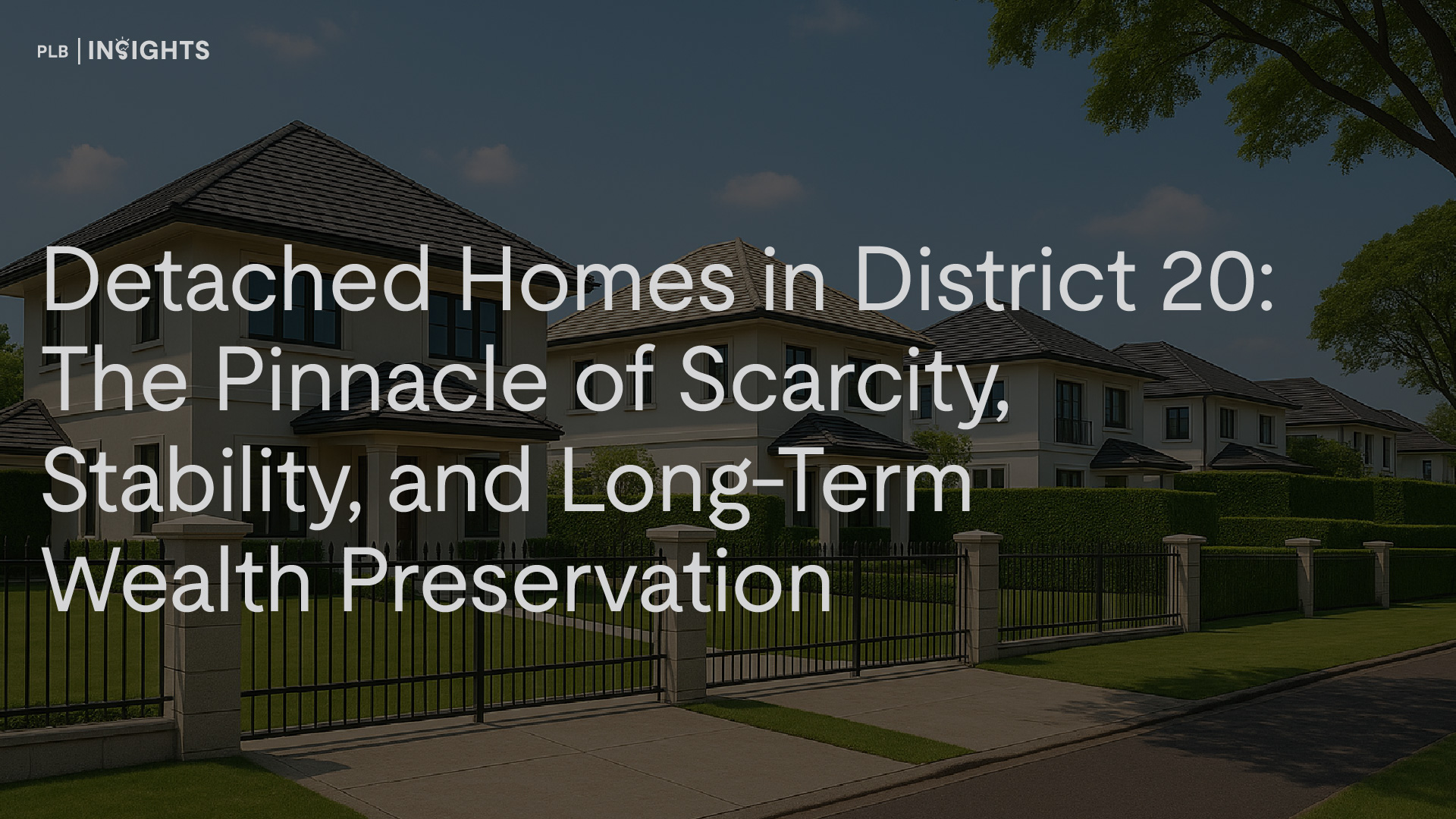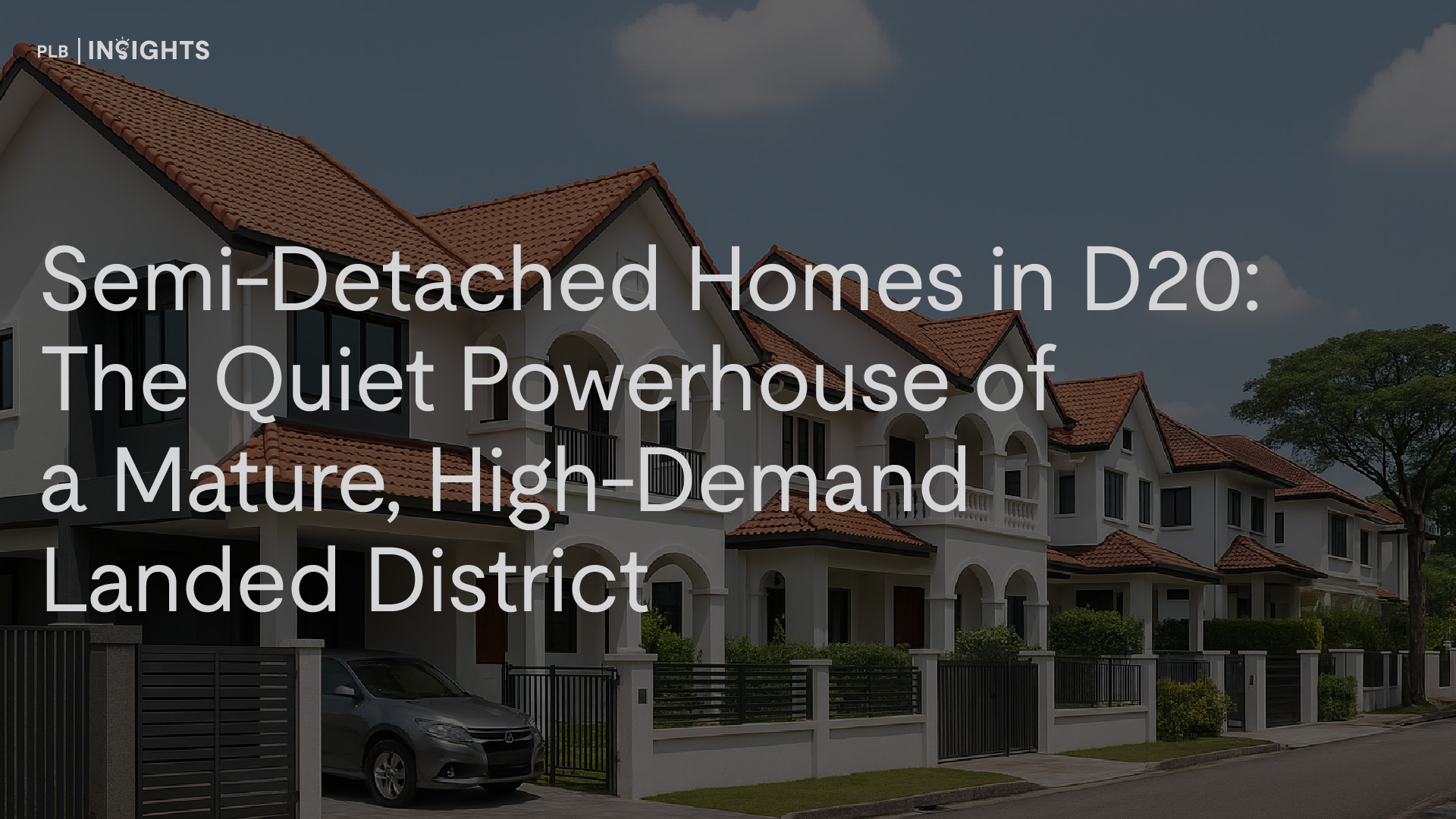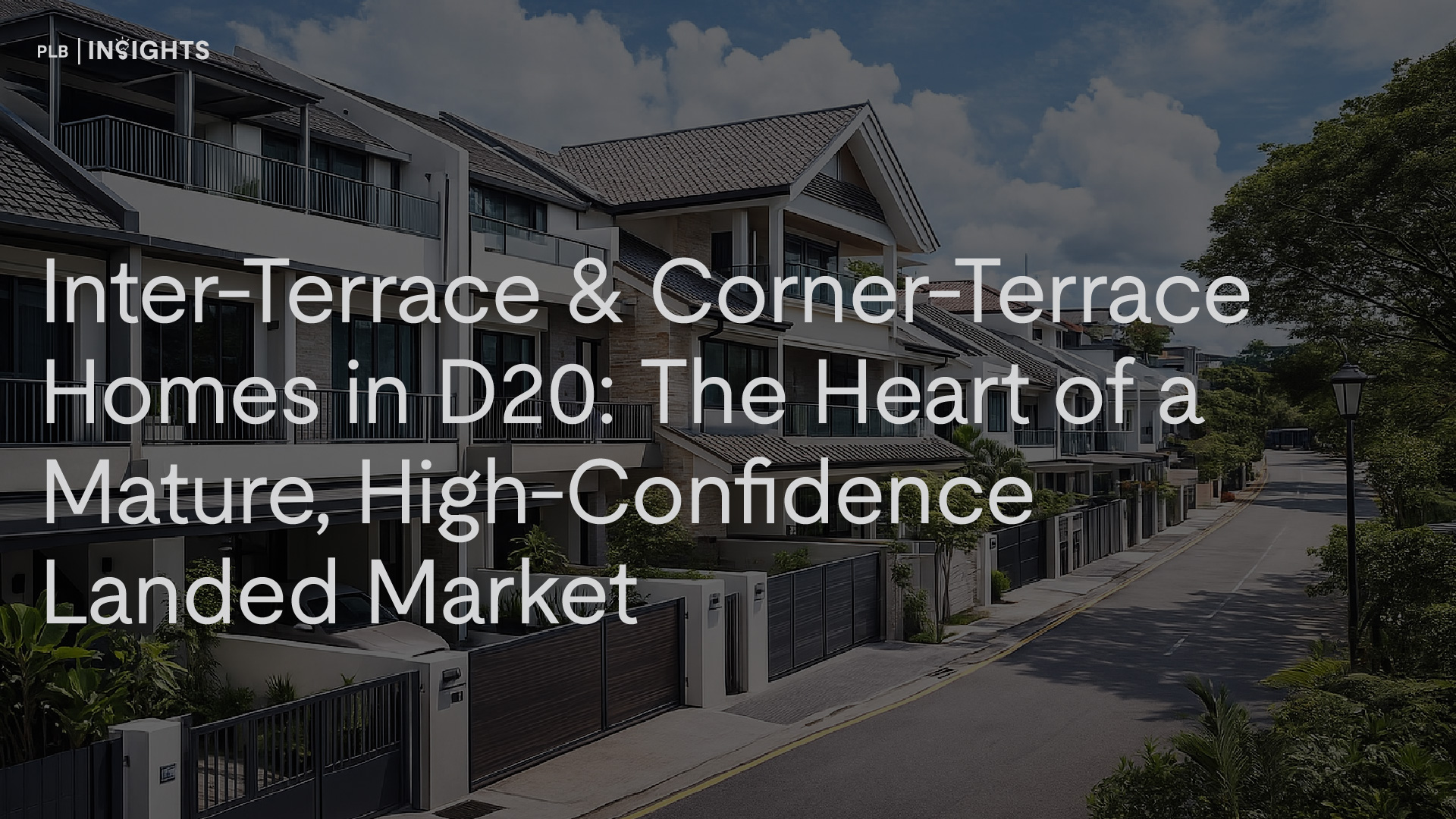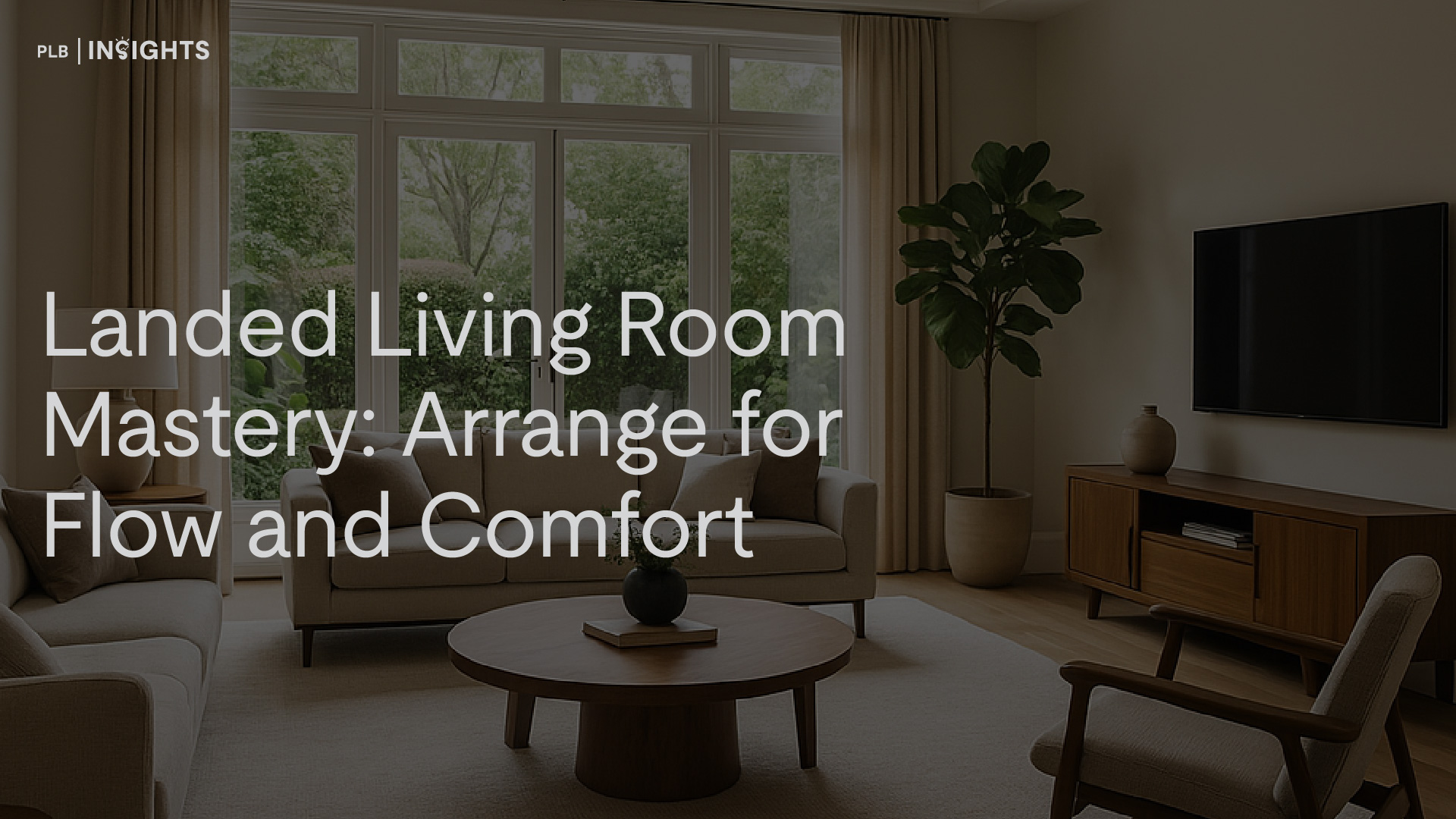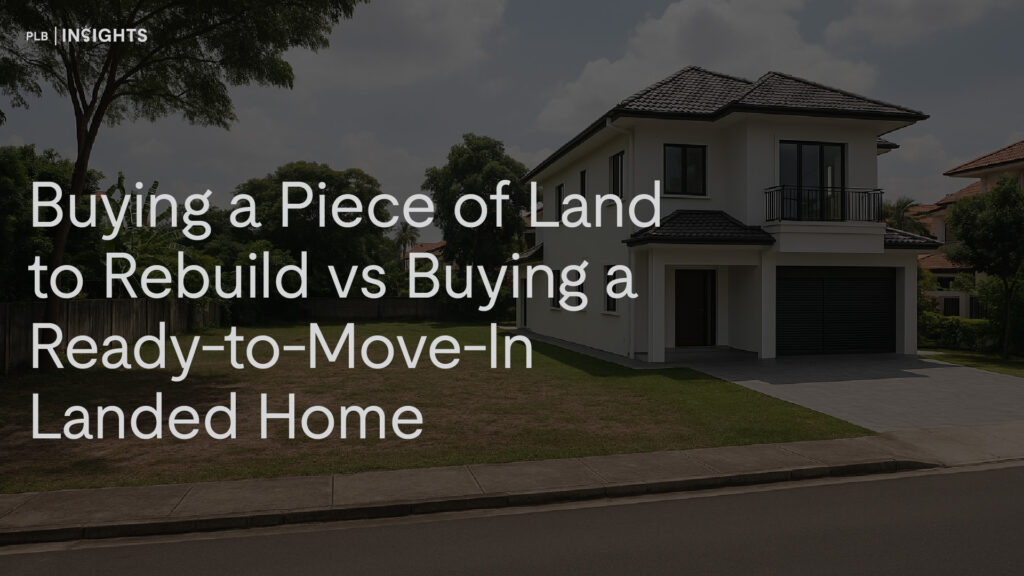
For many discerning buyers entering Singapore’s pure landed market, one perennial question often arises: should you buy a ready-built landed home, or a plot of land to rebuild from scratch?
Both options can yield long-term gains, but they differ greatly in convenience, cost, and complexity. Ultimately, the right choice depends on what you value more — certainty or control, speed or customisation, today’s comfort or tomorrow’s potential upside.
Let’s take a closer look at both paths, and what to pay attention to if you want your next landed home — whether rebuilt or ready — to stand out when it’s time to sell.
Buying a Ready-to-Move-In Landed Home
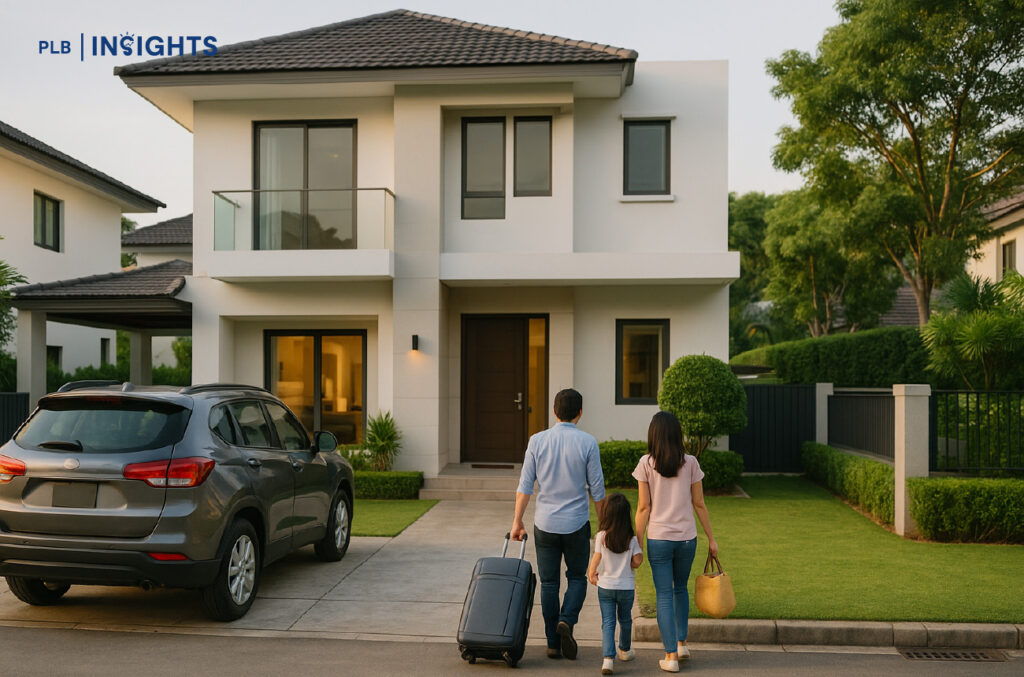
Convenience, Speed and Certainty
The biggest advantage of buying a completed pure landed home is immediacy. You can move in as soon as the transaction completes — no need to wait through the design and construction process, or rent elsewhere while your home is being rebuilt.
There’s also lower project risk. You’re not dealing with contractors, regulatory approvals, or unpredictable construction costs. Financing is simpler, too, since banks generally view completed homes as lower-risk assets.For families or buyers looking to relocate quickly, this convenience can be invaluable.
What to Look Out For
If you’re buying a ready home, due diligence matters. Focus on these key areas:
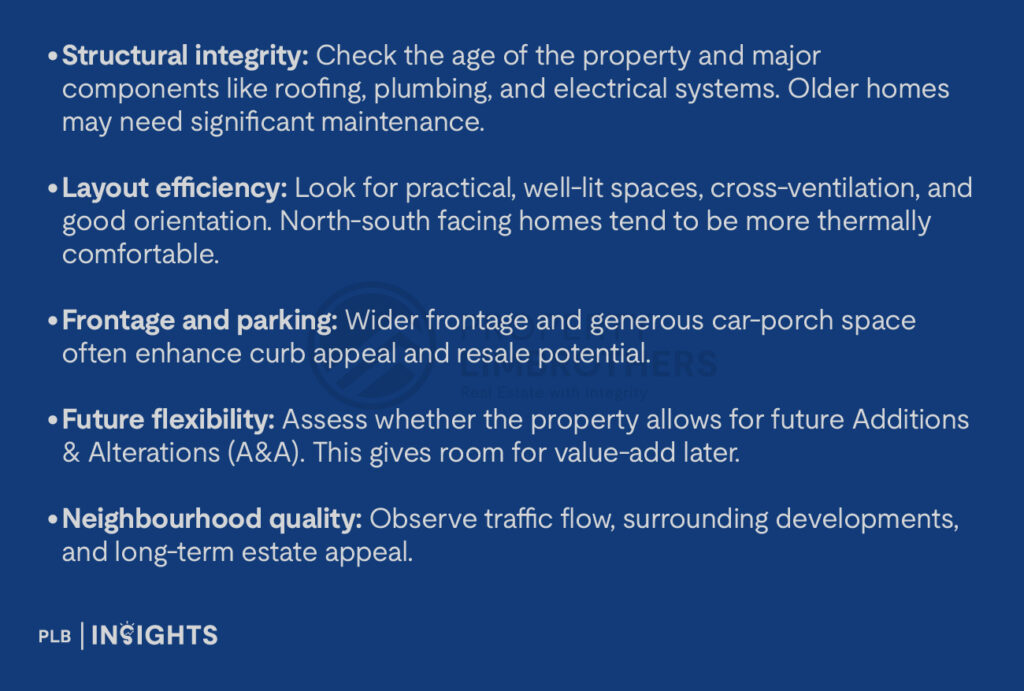
How to Maximise Future Appeal
When it comes to resale, buyers today value functionality and timelessness. If you’re purchasing a ready-built home, favour neutral interiors, modern layouts, and versatile spaces.
Homes that include a ground-floor bedroom, lift provision, or open-plan living areas with natural light often attract stronger demand later. Simple, well-maintained facades age better than trend-driven designs, while practical details — like concealed storage, dry-wet kitchen separation, and easy driveway access — appeal across generations.
Buying Land to Rebuild: Freedom and Higher ROI Potential
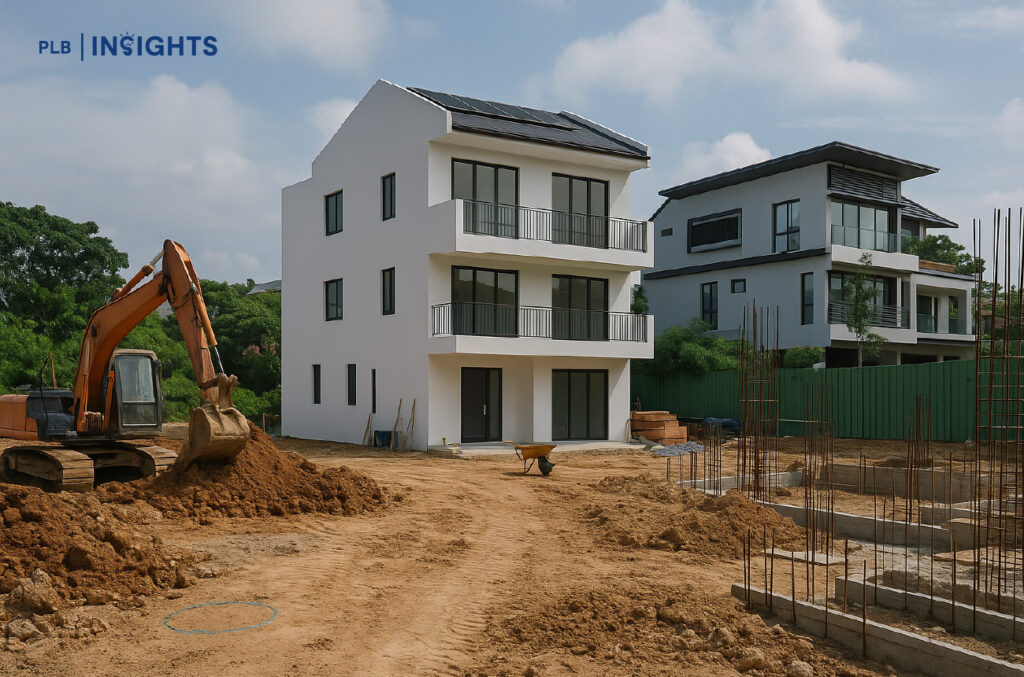
Control Over Design and Quality
Rebuilding gives homeowners complete control. You decide the layout, design language, and finishes — and can integrate features that today’s buyers desire but older homes may sometimes lack: flexible home offices, EV-charging points, solar readiness, and barrier-free access.
More importantly, you can future-proof the property from day one, ensuring its relevance and value for decades.
Cost and Timeline in 2025
Based on current 2025 estimates from several Singapore construction specialists:
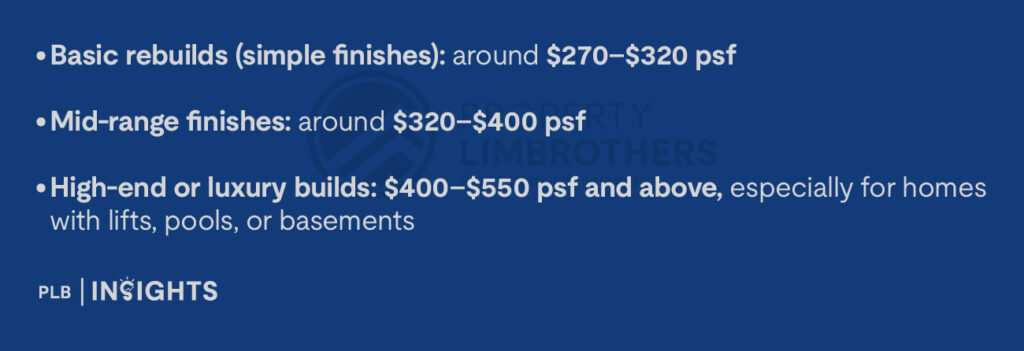
These figures exclude land cost, furnishings, and contingency buffers for structural or soil conditions.
As for timeline, expect at least 12–24 months from demolition to completion — typically closer to the upper end once you include BCA/URA approvals, design finalisation, and interior fit-out.
Risks and Considerations
Rebuilding has strong upside potential — but also more moving parts.
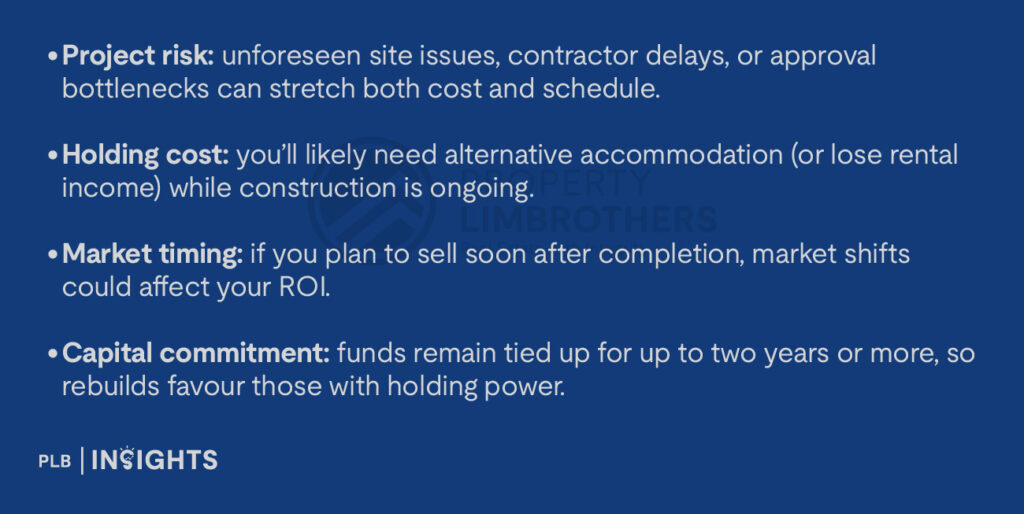
Still, for buyers who enjoy creative control and can afford time and capital, a rebuild remains one of the most rewarding ways to create a bespoke home and potentially capture stronger appreciation.
Building for Future Appeal: What Every Home Should Have
Whether you buy a ready-to-move-in home or rebuild, value in the landed segment is increasingly driven by design longevity and lifestyle fit. These are features that will appeal to future buyers:
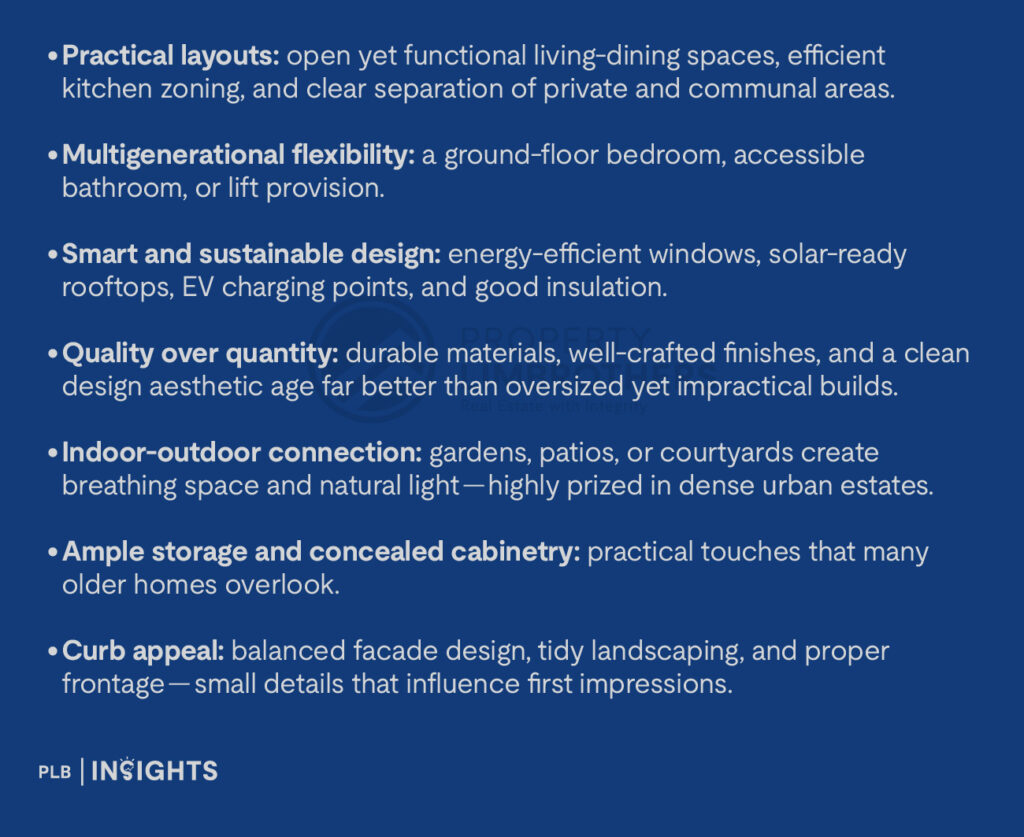
Ultimately, timelessness, functionality, and comfort are what future buyers will pay a premium for, not ornate flourishes or over-customisation.
Long-Term Perspective: Which Route Makes More Sense?
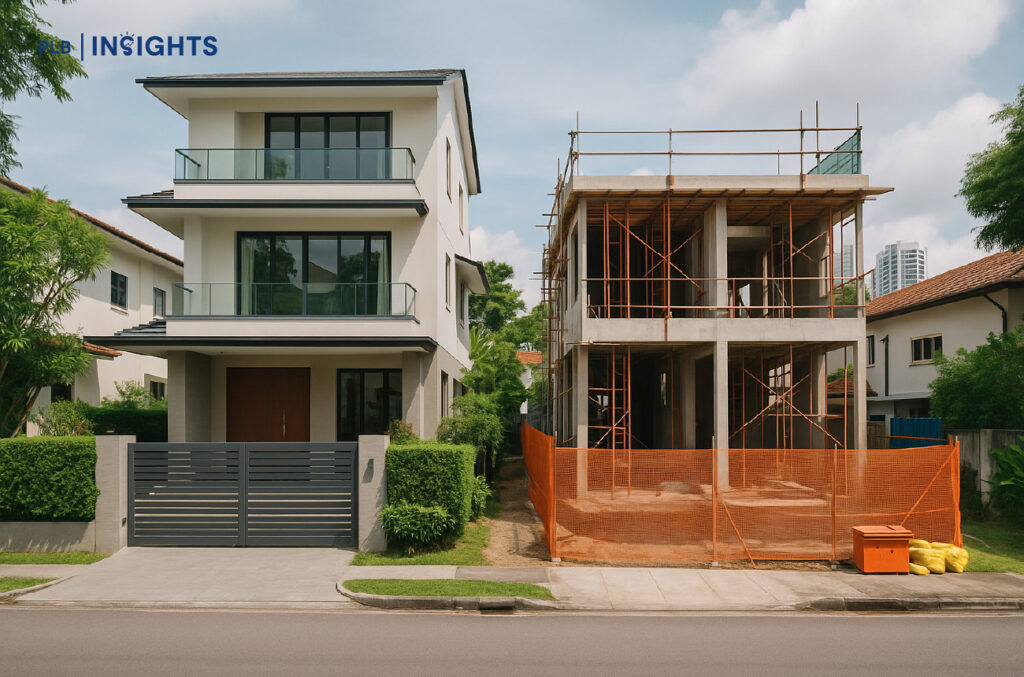
A ready-built landed home is ideal if you prioritise speed, convenience, and predictability. You know exactly what you’re buying, and can start enjoying the property immediately.
A rebuild, on the other hand, suits those with time, capital, and vision — homeowners who want to create a one-of-a-kind residence and are comfortable managing a longer process for potential higher upside.
In Singapore’s context, both approaches can work well because landed homes are finite — comprising less than five per cent of all housing stock. What ultimately determines value is not whether the home was rebuilt or bought ready, but whether it meets the evolving preferences of future buyers.
A poorly executed rebuild can underperform just as easily as an outdated ready home. Conversely, a well-maintained, thoughtfully designed property — whether rebuilt or not — can command strong resale interest even in slower markets.
Conclusion: Align the Choice with Your Lifestyle and Goals
There’s no universal “better” choice — only the one that fits your priorities.
If you prefer certainty and simplicity, a ready-to-move-in landed home may be the smarter move. If you value personalisation, have holding power, and want to craft something distinctly yours, rebuilding can offer greater satisfaction and long-term reward.
Whichever route you take, focus on timeless design, quality execution, and practical livability. These are what sustain value over time — and what future buyers will notice long after trends fade.
In a market where supply is limited and every landed home tells a story, the best decision isn’t just about what you buy — it’s about what you build into it.
Whether you’re eyeing a ready-built home or planning a rebuild, our consultants can help you make the right move. Get in touch with our team for personalised advice backed by market insight.
Thank you for reading, and stay tuned! For more detailed insights regarding the landed property market, join our Landed VIP Club and stay updated with the latest market trends and expert advice



